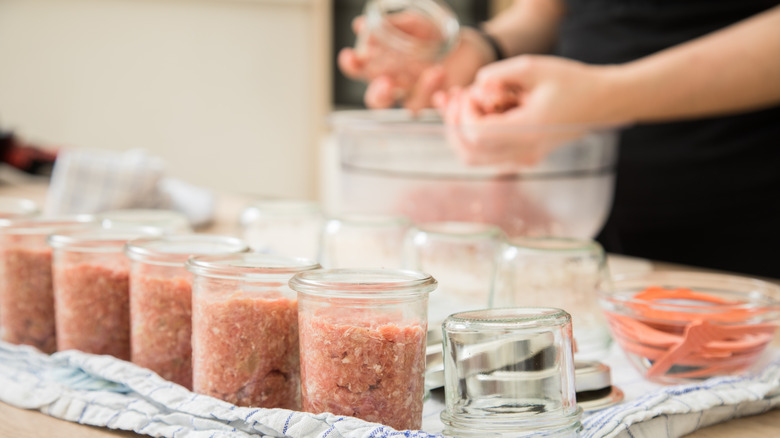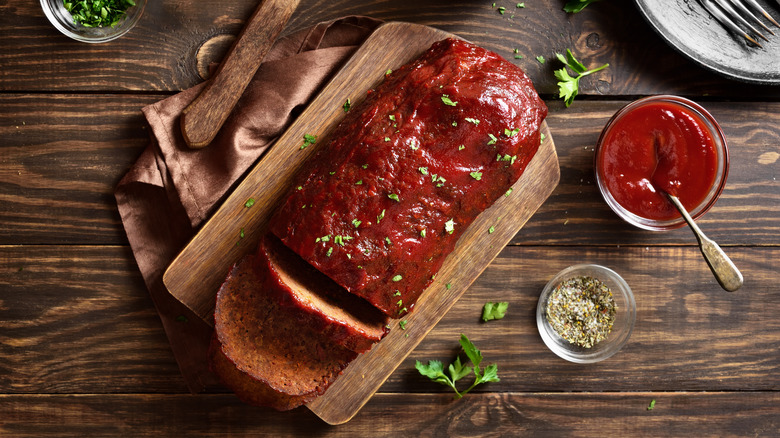The Historic Way People Used To Can Meatloaf
Historically, the process of preserving food has been essential to human survival. When food supply became scarce (i.e. winter), and refrigeration was centuries away, how did one eat? By preservation. By salting, pickling, fermenting, and drying their foods, our forefathers could make their summer bounty and fall game hunts last until the spring when food was plentiful again. Back then, food preservation wasn't just an option. In the wrong environment, it was life or death.
According to the United States Department of Agriculture, canning became popular after Napoleon Bonaparte challenged the public to develop a better method of food preservation for his always-on-the-go army. In 1810, Nicolas Appert was successful in developing a heat processing method that involved glass jars, i.e. heat canning. Since then, canning has come a long way.
According to History, the process played a huge role in 19th-century wars and the Great Depression. In between these events, Ball — one of the most recognized brands of canning jars and lids — published its first home canning recipe book, the "Ball Blue Book of Canning and Preserving" in 1915 (via Southern Living). Inside were tips and methods of canning the things we are used to seeing today like fruits and vegetables, but also something we just don't see...or perhaps don't want to see.
Apparently, canning meatloaf was a thing in the early 1900s. The "why?" is likely due to the lack of home refrigeration. The "how?" is interesting, to say the least.
Eat with your eyes first
The Iowa University Library contains an early copy of the "Ball Blue Book of Canning and Preserving," complete with a detailed recipe on how to can meatloaf. Five pounds of meat scraps (the trimmings from butchered meat, according to Merriam-Webster) are mixed with bread crumbs, herbs, seasonings, onion juice, eggs, gelatin, and soup stock. The mixture is pressed into jars, processed, and sealed. The book does not specify how to serve this gourmet creation, but one can only imagine that when it's time to unseal it, a mass of gelatinized meat stuff comes out.
Could this be the reason meatloaf has a traditionally unsavory reputation with people, particularly children? Can you imagine seeing that come out and being expected to eat it? Even hardcore meatloaf lovers could get a little queasy. But, clearly, canned meatloaf is still a thing. The blog Preserving the Good Life gives a modern take on canning meatloaf, mostly as a way to save dinner prep time. Ground beef is mixed with various ingredients (no gelatin!) before being processed and sealed. Once unsealed, the mixture is placed in a loaf pan, glazed, and baked. It's easy to assume that this modern rendition resembles a classic meatloaf recipe once prepared, ready for cold nights and meatloaf sandwiches.

